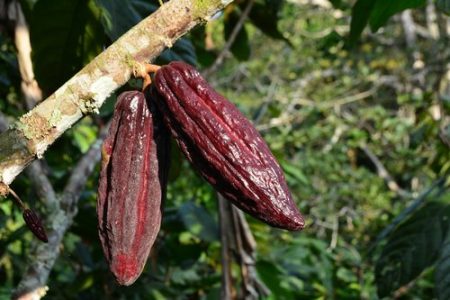Cocoa Agroforestry in Sierra Leone
Sierra Leone’s tropical rainforest is under threat from intensive agriculture, mining, logging and slash and burn agriculture for cocoa plantations. One major effort to prevent this is the introduction of cocoa agroforestry so that cocoa can be produced sustainably on the same land for many years, diminishing the need for further deforestation. This project was […] January 29, 2020
Sierra Leone’s tropical rainforest is under threat from intensive agriculture, mining, logging and slash and burn agriculture for cocoa plantations. One major effort to prevent this is the introduction of cocoa agroforestry so that cocoa can be produced sustainably on the same land for many years, diminishing the need for further deforestation. This project was initiated 30 years ago in a partnership between the Conservation Society of Sierra Leone, the national government, BirdLife International, the RSPB and 140,000 local people. Wildlife conservation was originally the main goal of the project, but it has since evolved into a nature-based solution to provide multiple societal benefits, and was the first project in West Africa to be partly funded by carbon finance.
In the agroforestry system, cocoa trees are grown among larger trees that provide shade, and pineapples, chillies and maize are grown as a source of additional food and income for the farmers. This landscape also provides a better home for wildlife than conventional plantations. Although the greater shade cover in agroforestry reduces the yield of cocoa per unit area, overall it is more profitable than conventional cocoa plantations because the cost per unit area is lower, shade trees provide extra income (e.g. from timber) and the cocoa can fetch a higher market price. This project therefore improves local livelihoods, and through avoided deforestation protects biodiversity and saves an estimated 500,000 tonnes of carbon a year.
